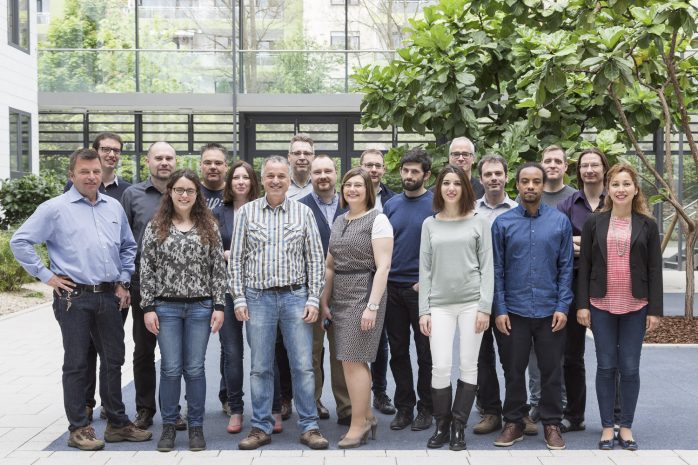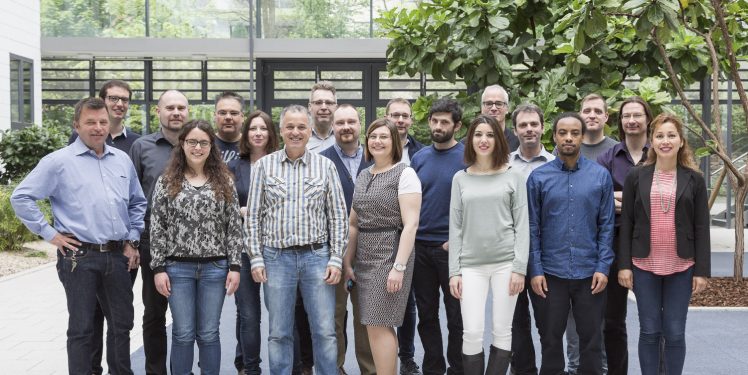From 10 to 12 May, the second plenary meeting of the Q-Rapids (Quality-Aware Rapid Software Development) H2020 European research project was held at Fraunhofer IESE.

We interviewed Prof. Xavier Franch, the project manager of Q-Rapids and a professor at UPC-BarcelonaTech. Below, you can find the interview between Dr. Andreas Jedlitschka (head of the Data Engineering department at Fraunhofer IESE; interviewer) and Prof. Xavier Franch (interviewee).
Dr. Andreas Jedlitschka (AJ): Welcome Xavier Franch, one of the top experts in Empirical Software Engineering and Requirements Engineering in the world. You just started a large European project, Q-Rapids, half a year ago – can you tell us a bit about the challenges you want to address?
Prof. Xavier Franch (XF): The main motivation for the project is that there is the perception, endorsed by several empirical studies, that quality requirements are difficult to deal with in general in software development, but especially in the last years with the agile trends and now, even more, with the rapid and continuous trends. Customers really focus on the functionalities because the agile methods focus on user stories, but quality requirements are addressed in an ad-hoc manner. This has been an observation regarding empirical studies from the research field. There are many systematic literature reviews reporting this problem with quality requirements. Therefore, we thought that we needed a data-driven project to manage quality requirements, including a view of the benefits that these requirements can provide to the agile development process.
We needed a data-driven project to manage quality requirements, including a view of the benefits that these requirements can provide to the agile development process.
AJ: Where do you see the main contributions?
XF: I would say that the main challenge is that there is a lot of tacit knowledge. People have a lot of knowledge in their heads, in their practices, informally, and they talk to each other at coffee meetings… The challenge is to bring all this tacit knowledge into something tangible that can be used effectively to make decisions. For instance, which requirements to use, which ones to postpone, how to deal with them, and so on and so forth. Additionally, how to document these quality requirements in the agile process? Even if by definition agile does not focus on documentation, this data could be suggested from the data gathered automatically.
The challenge is to bring tacit knowledge into something tangible that can be used effectively to make decision. Many partners of the project think that information about how decisions are made and the rationale for them should be available to everyone.
AJ: You have 2.5 years to go, and you probably assume that companies will be using the solution, the concepts, and the processes you develop during these 3 years. What would be the major benefits for companies using the Q-Rapids solution?
XF: The benefits are spread across several dimensions.
Several partners are interested in transparency. This is related to explicitly stating the tacit knowledge about why decisions are made. Many partners of the project think that information about how decisions are made and the rationale for them should be available to everyone.
Another impact regards the development process itself. We have several indicators defined in the process that hint at what we aim to. We aim to have shorter time-to-market, shorter release cycles, higher-quality software… This could be the typical results that we expect from leveraging quality requirements.
An additional point from the last plenary meeting held in Kaiserslautern is that Q-Rapids may be a tool for various stakeholders. For instance, when IT people discuss with management, they have figures about time-to-market, about effort, but they cannot convince management that improving the quality will bring value to those indicators.
AJ: How do you ensure that you will get there? Is there a systematic evaluation? Do you have industry partners?
XF: As a research innovation action, this project has a mixture of three academic partners and four industry partners who are providing one use case each, and we are very active to engage the partners within the consortium. Also, we have staged the project into several phases. There are three central phases of 9 months each. We are starting the first one, where we will develop a proof-of-concept in which we will demonstrate the feasibility of the approach to the companies. After that we will have a consolidated version, and finally the final product. In parallel, we have an evaluation plan so that we have a very clear methodology in order to assess the indicators that we have in the proposal, and the thresholds that we have. We need to adapt the indicators to the reality of each use case, but for us it is fundamental to be able to monitor the progress very closely.
AJ: From the scientific point of view, what would be your KPIs? What do you as a researcher expect? How would you consider the project to be successful for you personally?
XF: That is a very interesting question. As researchers we have our own KPIs, which are mainly related to publications. This is the most observable KPI. But I like these European projects because they go way beyond that. If I wanted publications, I would just lock myself inside my office and I would have publications. However, for me these projects have different challenges: learning, basically. To further educate the people of my group, I think that it is very important to be in touch with leading partners such as Fraunhofer IESE and the University of Oulu. We think we can learn a lot from working with them, just as they can learn something from working with us. And there is also collaboration with industry, which is very challenging. You need to understand their mindset and way of working if you really want to build something transferable. If you don’t fit your ideas into their way of working, you won’t get acceptance. So for me, publications are good, but the main activity is the continuous learning process in European research innovation actions.
Publications are good, but the main activity is the continuous learning process in European research innovation actions.
AJ: Thank you very much for this interview and good luck with the project.
XF: Thank you very much for the opportunity.

